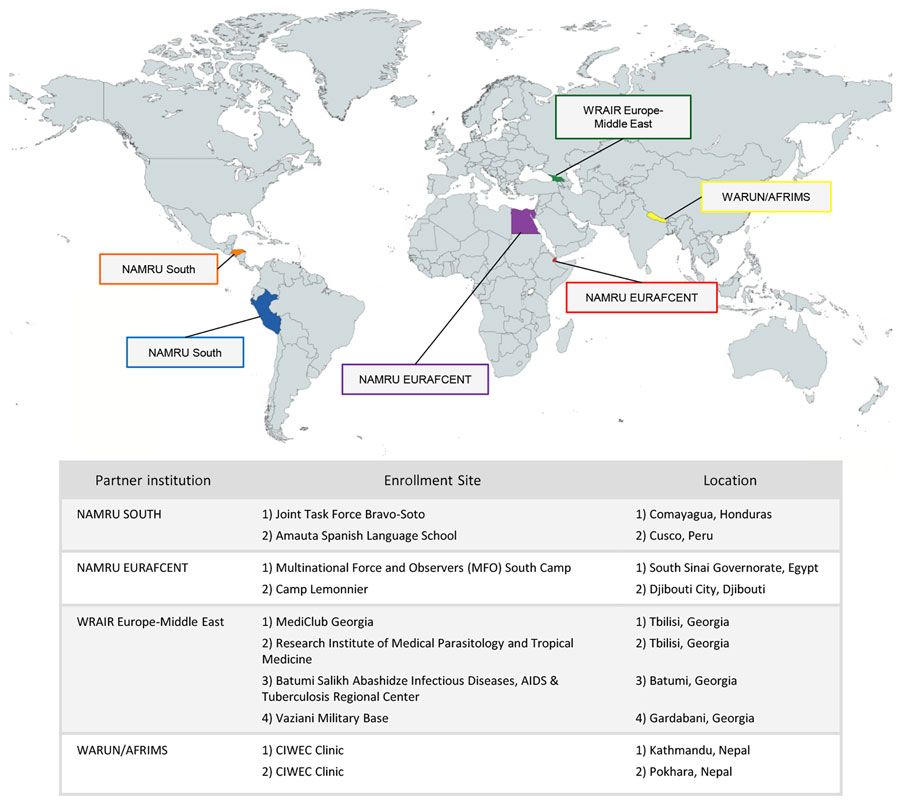Volume 30, Supplement—October 2024
SUPPLEMENT ISSUE
Articles
Etiology and Epidemiology of Travelers’ Diarrhea among US Military and Adult Travelers, 2018–2023
Figure 1

Figure 1. Partner institutions and enrollment site locations for a study of etiology and epidemiology of travelers’ diarrhea among US military personnel and adult travelers, 2018–2023. The US Naval Medical Research Unit (NAMRU) south enrollment sites: orange, Comayagua, Honduras; blue, Lima, Peru. The US Naval Medical Research Unit EURAFCENT detachment enrollment sites: purple, Cairo, Egypt; red, Djibouti City, Djibouti. Walter Reed Army Institute of Research (WRAIR) Europe-Middle East enrollment sites: green, Tbilisi, Batumi, and Gardabani, Republic of Georgia. Walter Reed Armed Forces Research Institute of Medical Sciences Research Unit Nepal (WARUN/AFRIMS) enrollment sites: yellow, Kathmandu and Pokhara, Nepal.
Page created: October 01, 2024
Page updated: November 11, 2024
Page reviewed: November 11, 2024
The conclusions, findings, and opinions expressed by authors contributing to this journal do not necessarily reflect the official position of the U.S. Department of Health and Human Services, the Public Health Service, the Centers for Disease Control and Prevention, or the authors' affiliated institutions. Use of trade names is for identification only and does not imply endorsement by any of the groups named above.